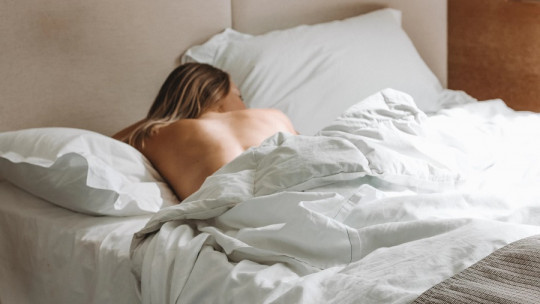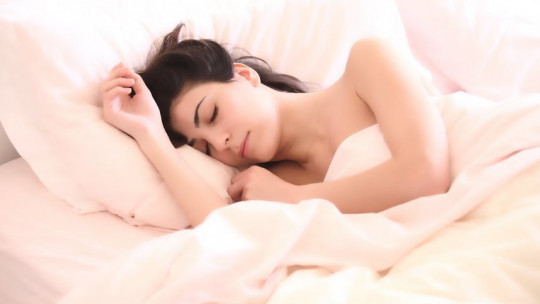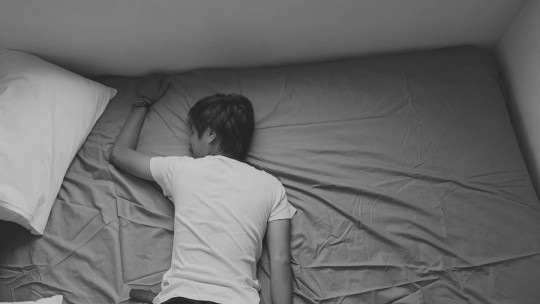Sleep is a vital need that accompanies us throughout our lives. We spend on average 25 years of our lives sleeping.
In fact, sleeping well is essential to being able to carry out our daily lives normally, and it is a very important factor that favors our quality of life. In this article We will talk about a group of sleep disorders: dyssomnias Within them, we are also going to talk about one in particular: insomnia.
What does dyssomnia mean for the person who suffers from it? How can it be treated? Let’s see it below.
Dysomnias: definition and causes
Dysomnias are disorders of the quantity, quality, schedule and duration of sleep These are psychogenic and primary sleep disorders, that is, they cannot be explained by an underlying medical illness.
The usual causes are usually psychological: altered or intense emotional states (anxiety, stress,…), ruminative thinking style, etc., or extrinsic to the subject: pace of life, bad sleeping habits (sleep hygiene), etc
Classification of dyssomnias
According to the DSM-IV-TR (Diagnostic and Statistical Manual of Mental Disorders), within the group of sleep disorders, dyssomnias They are in turn classified within primary sleep disorders along with parasomnias
Dysomnias include primary insomnia (or insomnia disorder in DSM-5), primary hypersomnia (hypersomnia disorder in DSM-5), narcolepsy, breathing-related sleep disorder, circadian rhythm disorder, and dyssomnia. not specified.
Dysomnia not otherwise specified includes restless legs syndrome (uncomfortable sensations in the extremities – mainly the legs – during rest) and nocturnal myoclonus (periodic movements of the extremities during sleep).
In the DSM-5, however, the term dyssomnias disappears, and insomnia disorder, hypersomnia disorder and narcolepsy remain as independent categories, without being within any specific group.
Symptoms and characteristics associated with insomnia
Insomnia is the most common dyssomnia in the general population Studies establish that approximately 30% of the population has at least some of the characteristics of insomnia.
If we base ourselves on the DSM-IV definition, the prevalence of people diagnosed with insomnia is reduced to 6%. According to the ICD-10 (International Classification of Diseases), between 1 and 10% of the adult population suffers from it.
The predominant symptom of insomnia is difficulty initiating or maintaining sleep, or not having restful sleep, for at least 1 month (DSM-IV-TR) (the DSM-5 states 3 months). Sleep disturbance or associated daytime fatigue causes clinically significant discomfort or deterioration in the subject.
According to the ICD-10, symptoms must appear at least 3 times a week for at least 1 month. It is more prevalent in women and its prevalence increases with increasing age.
Types of insomnia
There are three types of primary insomnia: onset (which appears when you start sleeping), maintenance (during sleep) and termination (where the main symptoms are early awakening in the morning and the inability to fall back asleep). ).
Psychological treatments for insomnia
Some of the psychological treatments that have been shown to be most effective for insomnia are:
1. Stimulus control
It is considered the treatment of choice. It is based on classical conditioning, and is about associate the use of the bed with sleep by restricting activities that serve as cues to stay awake and setting the time to wake up to stabilize the sleep-wake rhythm.
Thus, the goal is for the bedroom/bed to be associated with a rapid onset of sleep.
2. Progressive relaxation
It is the second most effective for this type of dyssomnia. One of the modalities applied is Jacobson’s progressive muscle relaxation, where all muscles are relaxed to facilitate sleep induction.
3. Paradoxical intention
It is the third most effective. It consists of thinking precisely the opposite of what you want to achieve, that is, thinking that “we don’t want to sleep.” By reducing the pressure or anxiety associated with being able to sleep, as well as the discomfort from not doing so, it is easier for sleep to occur naturally.
4. Multicomponent programs
They include stimulus control techniques, sleep hygiene, and cognitive techniques that help reduce inappropriate cognitions associated with the disorder.
5. Sleep restriction
Through this technique it is intended to produce a state of slight lack of sleep that makes it easier to fall asleep sooner sleep with fewer interruptions and get deeper sleep.
It is about reducing the number of hours spent in bed, trying to get them as close as possible to the time deemed appropriate. Subsequently, the time in bed is increased until optimal sleep duration is achieved.
6. Sleep hygiene
They are a set of Healthy routines, recommendations and habits before going to sleep which should be applied in order to obtain a healthy and restorative form of sleep.
The ultimate goal is to sleep better, by acquiring better habits that lead to a healthy lifestyle or changing those that interfere with sleep.










